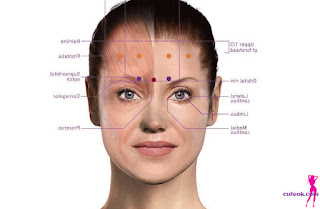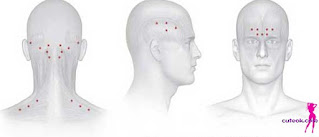botox migraine injection sites
Botox injections have been used for decades to help reduce the appearance of wrinkles and fine lines, but in recent years they've gained a new use: treating chronic migraines. Chronic migraines are defined as headaches that occur on 15 or more days per month for at least three months. Botox injections for migraines have been approved by the US Food and Drug Administration (FDA) since 2010 and have become a popular treatment option for those who suffer from chronic migraines.
In this article, we'll explore the various injection sites for Botox treatment for migraines in the USA, how the injections work, and the potential benefits and risks of this treatment option.
What is Botox?
Botox is a brand name for a neurotoxin produced by the bacterium Clostridium botulinum. It is used to treat a variety of conditions, including wrinkles, muscle spasms, and migraines. When used for migraines, Botox is injected into specific sites on the head and neck to help reduce the frequency and severity of headaches.
Botox injections are becoming increasingly popular as a treatment for migraine headaches in the United States. Botox (botulinum toxin type A) is a highly purified form of the naturally occurring botulinum toxin that has been used for decades to treat a variety of medical conditions. Botox works by blocking the release of certain chemicals that cause pain, resulting in a decrease in the frequency of headaches. While Botox has been used to treat a variety of medical conditions, it is most commonly used as a treatment for migraine headaches.
Botox injections are typically administered by a healthcare professional, such as a neurologist, anesthesiologist, or a certified nurse practitioner. The injections are typically given in the forehead, temples, or at the base of the neck. The injections are typically given in a series of injections over several weeks or months. Each injection is generally given at a different site, as the effects of the Botox can last for up to three months.
Although Botox is generally considered to be a safe and effective treatment for migraine headaches, there are a few potential side effects that should be considered before undergoing treatment. These side effects include temporary numbness in the area where the injection was given, swelling, redness, and bruising. In rare cases, these side effects can be more severe, such as a localized headache or muscle weakness. Other potential side effects include temporary double vision, blurred vision, drooping eyelids, and dry mouth. In addition, there is a risk of infection at the injection site if the injection is not administered properly.
In the United States, Botox injections are typically administered at one of several specialized migraine headache centers. These centers are staffed by healthcare professionals who are specially trained to administer Botox injections. The centers typically offer a range of services, including diagnosis, treatment, and follow-up care. Additionally, many centers offer educational materials and support groups to help patients better understand their condition and make informed decisions about their treatment.
When considering Botox injections as a treatment for migraine headaches, it is important to consult with your healthcare provider to determine if the treatment is right for you. In addition to the potential side effects, it is important to understand the cost of the injections, as well as the potential risks and benefits of the treatment. Additionally, it is important to understand the importance of following the healthcare provider’s instructions for administering the injections, as well as any other recommendations for managing the condition.
Botox injections can be a safe and effective treatment for migraine headaches, but it is important to understand the potential risks and benefits before undergoing treatment. It is also important to consult with your healthcare provider to ensure that the treatment is right for you. With the help of a knowledgeable healthcare provider, you can make an informed decision about whether Botox injections are the right treatment for you.
How do Botox injections work for migraines?
Botox injections for migraines work by blocking the release of chemicals that cause pain and inflammation. The injections are typically given every 12 weeks and involve 31 injection sites across seven different areas of the head and neck.
When injected into specific sites, Botox can help reduce the frequency and intensity of migraines. It is believed that Botox works by blocking the release of neurotransmitters that cause pain and inflammation, such as substance P, calcitonin gene-related peptide (CGRP), and glutamate.
Botox Injection Sites for Migraines
There are seven specific injection sites that are typically used for Botox injections for migraines. These injection sites are based on research conducted by Allergan, the pharmaceutical company that manufactures Botox.
- Forehead: The forehead injection site is located between the eyebrows and above the bridge of the nose. This injection site includes five injection points.
- Temples: The temples are located on the side of the head, just above the ears. This injection site includes four injection points.
- Back of the head: The back of the head injection site is located at the base of the skull. This injection site includes six injection points.
- Neck: The neck injection site includes four injection points and is located on the back of the neck, just above the hairline.
- Shoulders: The shoulders are located on the sides of the neck and are a common location for tension headaches. This injection site includes four injection points.
- Upper back: The upper back injection site is located between the shoulder blades and includes two injection points.
- Trapezius muscle: The trapezius muscle injection site is located in the muscle that runs from the base of the skull to the shoulder blades. This injection site includes six injection points.
The injection sites are determined based on the specific location and severity of the patient's migraines. The injection points are typically marked on the patient's skin prior to the injection to ensure accuracy.
Benefits of Botox Injections for Migraines
The benefits of Botox injections for migraines are significant. According to a study published in the Journal of the American Medical Association, Botox injections reduced the frequency of migraines by 8.4 days per month, compared to 6.7 days per month for patients who received a placebo injection.
In addition to reducing the frequency of migraines, Botox injections can also help reduce the intensity and duration of migraines. This can lead to a better quality of life for those who suffer from chronic migraines.



Post a Comment